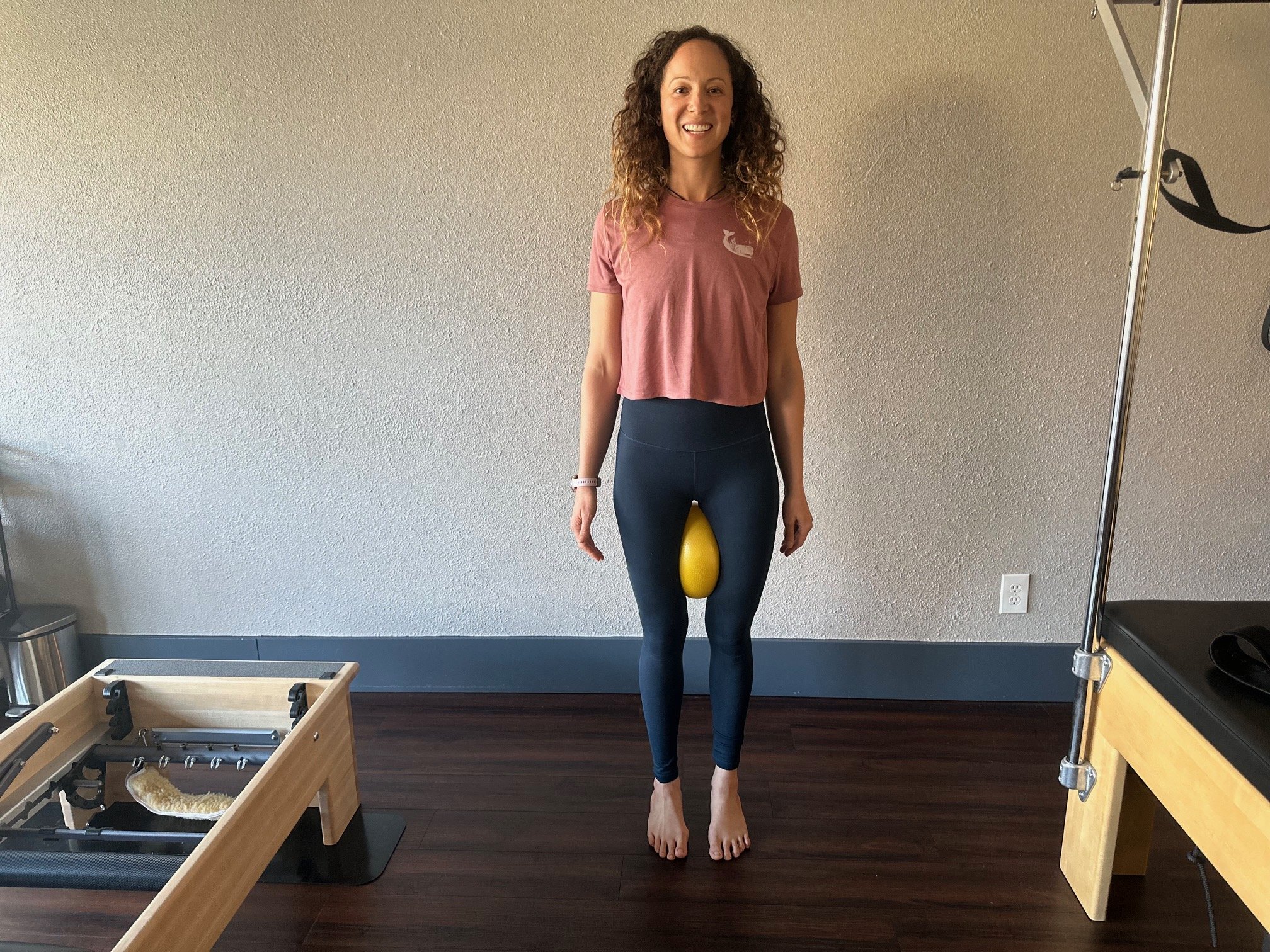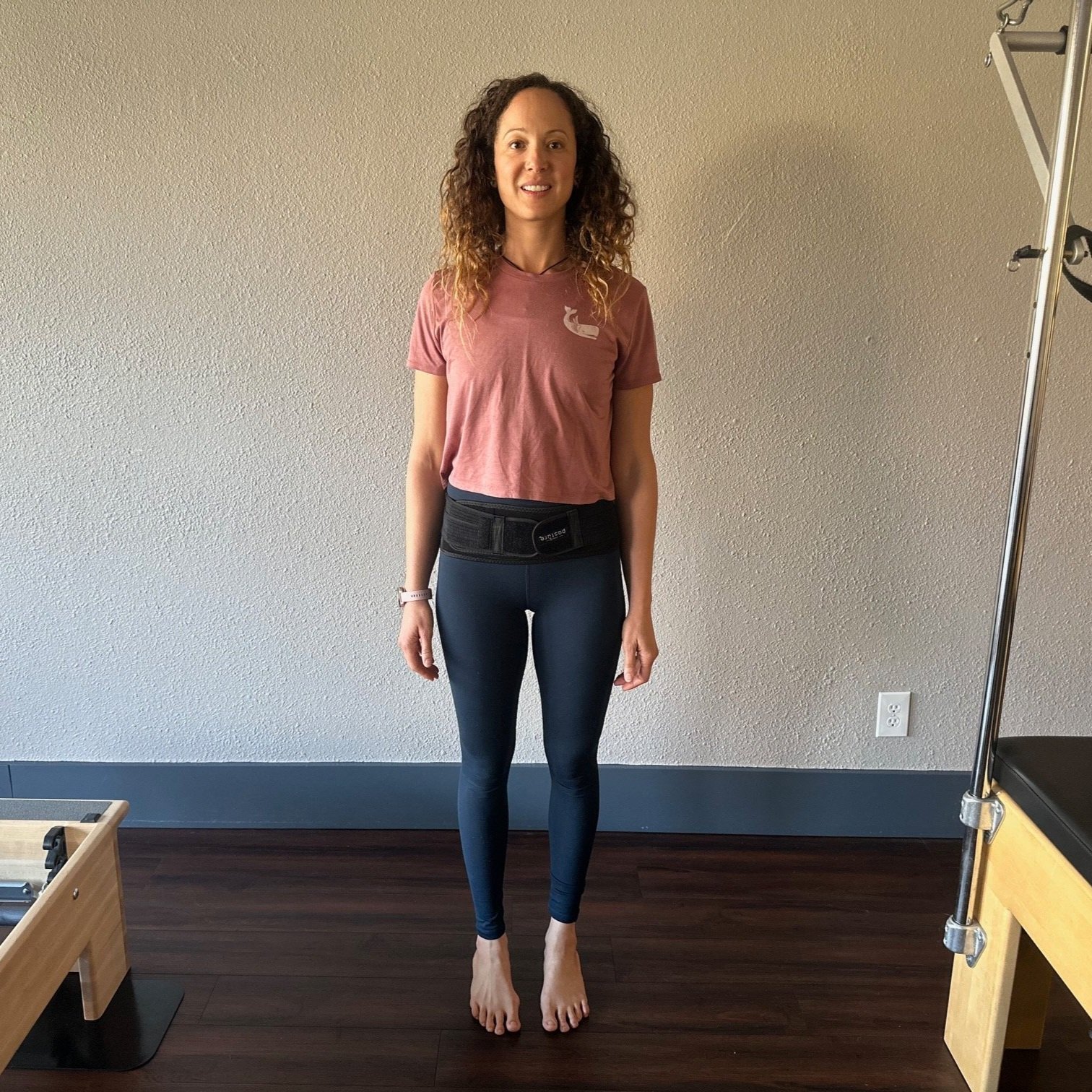How hip structure affects range of motion
As Pilates and movement instructors, we are trained to notice gait, movement patterns, and postural habits. I am also fascinated by the role the pelvis and hips play in human movement. As the connection between our legs and spine, the pelvis and hips serve to transfer force between the lower extremities and the trunk and can directly affect the low back and our ability to move with grace and ease.
Have you ever seen someone who could easily externally rotate their legs and yet, experience tightness or discomfort when pointing their toes forward in a parallel position? How about a person who walks toe-in, and moving in external rotation is an effort? Are these apparent imbalances something to correct? I recall Lisa, a client referred to me by a fascial stretch therapist, who was experiencing pain in her hips.
My assessment confirmed his suspicions; Lisa’s hip structure was anteverted. This normal structural variation would not have been an issue, except that Lisa had been attending ballet lessons and avidly working on increasing her turnout. Over time, she began experiencing pain and the feeling of her hip “going out” as she felt weakness and loss of stability in her hip.
Range of motion in an average hip is about 45 degrees external and 35 degrees internal, which affords the person both external and internal rotation in exercises and movement. However, there are variations in hip joint structure that affect range of motion, which includes retroverted and anteverted hips.
When a person has retroverted hips, they will have greater range of motion in external rotation than internal rotation. This person can easily sit in a cross-legged position or easily accomplish the splits, turnout in ballet or Pilates “first position.” They may also appear to walk slightly duck-footed, with the alignment of the leg from thighs to feet externally rotated yet vertically congruent as far as the bony landmarks of hips, knees, and ankles.
To a person with retroverted hips, a parallel leg may feel internally rotated—and may be the end range of their relative internal rotation.
Note: If one hip has markedly less internal rotation than the other, this could be a sign of hip degeneration or a structural difference in the pelvis and not a retroverted hip. A thorough client assessment will assess the whole body and not just an isolated body part.
If we focus on hip and leg organisation that accommodates their greater degree of external rotation by allowing a comfortable turn-out in closed - chain exercises such as standing repertoire on the Reformer or the Chair, we can save parallel or internally rotated variations, (if they have the available range of motion), for open - chain exercises such as leg springs or feet in straps, and when the hip joints are in a reduced - load relationship to gravity, such as supine or side-lying positions on the Reformer, Cadillac and or Mat.
When a person has anteverted hips, they will have a greater range of motion in internal rotation than external rotation. This person may easily sit in a “W" position, but be uncomfortable or unable to sit cross-legged or turnout in ballet or Pilates “first position.” They may also appear to walk slightly pigeon-toed with the alignment of the leg from thighs to feet internally rotated yet vertically congruent as far as the bony landmarks of hips, knees, and ankles. This is not to be confused with genu valgum, in which the knees are closer to the midline respective to the hips and ankles.
Clients with anteverted hips may have a smaller range of motion in abduction exercises such as Standing Side Splits, so instead of placing the carriage foot by the shoulder rests, the foot may be placed closer to the spring end of the carriage. Other examples may include reducing the range of motion in Leg Circles to a comfortable degree of abduction, and allowing parallel leg positions in exercises that are traditionally taught in turn-out.
The amount of internal versus external rotation available will depend on hip structure and the health of the tissues around it. The limit of range of motion in hip rotation will be signaled by the inability to go further and by the discomfort or pain that may occur, as tissues are pinched, if more rotation is attempted beyond the felt end range.
For both anteverted and retroverted hips, be aware of the relative movement of pelvis on femurs, such as during carry-and-transfer tasks and rotational exercises when the person is standing. For example, if your feet are fixed and you rotate to the right to pick up an object, you will be simultaneously internally rotating your right thigh and externally rotating your left thigh, under your pelvis. This is something to keep in mind when moving and exercising; be aware of any discomfort that may be occurring as a result of relative rotation.
Simple tips for working with cranky Sacroiliac (SI) joints
Someone walks into your class or session with SI joint discomfort or sciatica. What do you do?
The sacroiliac joints are the connection between the two halves of our pelvis and the sacrum, which supports the base of our spine. When our SI joints are operating well, we don’t notice them, as movement of these joints is so tiny, it is most often not noticeable. When SI joints become grumpy, we may see clients who bear weight away from pain or toward instability. Transitions from sitting to standing, bending forward, lumbar extension and prolonged periods of standing may be uncomfortable or painful. There may be the experience of pain, which we call sciatica, with buttock pain that may also travel down a thigh or leg.
I use two simple assessments that help guide my exercise programming when working with people who have a history of, or are experiencing, SI joint issues or sciatica.
Ball Squeeze: Instruct the person to place a soft ball, about nine inches diameter, between their upper thighs and squeeze the ball for at least five seconds. While they are squeezing the ball, ask whether this action makes them feel better, worse, or has no effect. Squeezing the ball creates a slight decompression of the SI joints; therefore a relief of pain may indicate inflammation or compression in one or both SI joints. If the ball is helpful then I will keep the exercises bilaterally symmetrical below the waist. Placing a ball between the thighs during seated and supine exercises will help the client organize their pelvis and recruit adductors, providing a slight decompression of the SI joints while affording enhanced recruitment of the pelvic floor. In prone positions, a small pillow under the hips and abdomen may help provide more comfort for the person experiencing discomfort in the sacral area.
SI Belt Test: Place a yoga strap or a sacroiliac belt around the person’s pelvis. SI belt placement needs to be below both the anterior superior iliac spine (ASIS) and posterior superior iliac spine (PSIS) with the closure tight enough to stabilize the bones. Ask the person whether the belt makes their discomfort better, worse, or has no effect. If it is uncomfortable, remove the belt. If it is better or has no effect, ask them to walk around with the belt on; again ask them whether this action makes their pain better, worse, or has no effect. If they feel better with the belt on, recommend that they buy one. It is a good idea to have a few SI belts on hand either to provide as loaners to use during exercise or to resell so the person can wear it at home.
For more tips and in-depth exploration check out my book and curriculum based on the book, The Dynamic Spine: Safe Movement for All Spines (and Hips).
Is Pilates good for hip pain? It sure is.
Gwen Miller is the author of Safe Movement for All Spines, A Guide to Spinal Anatomy and How to Work with 21 Spine and Hip Conditions. As a Pilates educator, teacher, Hendrickson Method Therapist, Yoga Therapist, CHEK Practitioner, ACE and NASM-certified personal trainer, Gwen’s diverse and eclectic background informs her insightful and collaborative educational experiences for students and colleagues.






